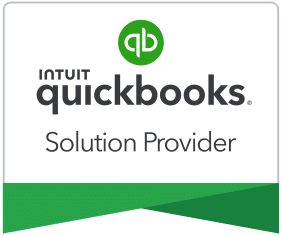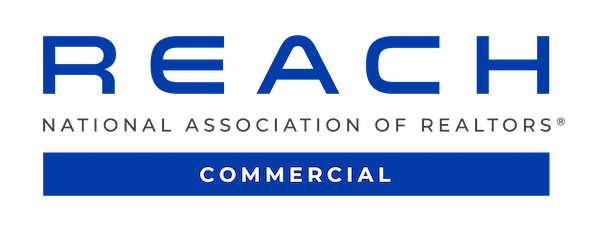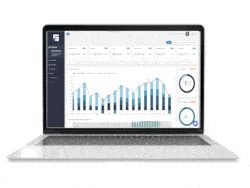Many of us have experience with the lending process for getting a home loan. The average home loan process takes 45 days. The process of getting commercial real estate loans, or CRE loans, works differently and takes much more time, documentation, and communication.
In this article, we describe what you need to know about the process of getting a commercial real estate loan. When it comes to CRE loans, the process complexity and timeline vary greatly in comparison to the residential side. Part of the complexity is that each lending institution goes by slightly different lending terms and guidelines. Thanks to Joe Vens for providing insight based on his experience as a lending professional. This blog provides a general guideline, so let’s start with the basics.
What are CRE loans?
Income-producing properties are your typical candidates requiring CRE loans.
You could get a CRE loan for the following asset or transaction types:
- multifamily housing
- mixed-use buildings (meaning they include both retail or office space plus residential living)
- retail buildings
- office buildings
- warehouses
- raw real estate (land)
- development and construction of a new building
- redevelopment of the property
- refinancing of an existing commercial loan
Usually, these type of loans are taken out by business entities (LLCs, corporations, etc.) and not individuals. Lending institutions lent over $500 billion in CRE loans during 2016 according to the Mortgage Bankers Association, and the expectations are for this trend to continue.
What do I need to provide to my lender for CRE loans?
The lending institutions usually have different expectations. They will vary based on their history with you as a borrower as well as their own internal policies. Many institutions answer to shareholders, and in order to satisfy them, policies are set in place to establish risk thresholds. Similarly, for institutions that are not publicly traded, there are still management-established guidelines.
When acquiring CRE loans, most lending institutions will require the borrower to provide the following.
Information about the size and scope of the project
- This includes a description of any improvements or construction, intended use of the structure, drawings, environmental analysis, contractors, timelines, and costs associated with any and all work. In addition, lenders could ask for other requirements as well. Particularly with new or improvement projects, lenders must understand the costs and the risks associated with the development. In the event of a cost overrun, it could hurt the borrower’s ability to make their mortgage payment. The borrower’s history on projects will play a role, but the lender needs to understand the outcome of those projects. Lenders mainly look at schedule and budget, since past performance shows competency and indicates future project success.
Financials for the project
- This includes the rent roll (for apartment buildings or self-storage units).
- The schedule of leases (the equivalent of an apartment building rent roll for the retail, office, or warehouse spaces).
- Lenders want to see the length of leases and the types of tenants occupying the space. This information allows the lender to understand the level of risk associated with your loan. In some cases, the lenders will look at current market conditions, since the conditions can influence a tenant’s financial well-being. Certain market conditions can add risk to your loan. These risks can influence the likelihood of lease renewals.
- For properties under construction, the lender must understand the area’s vacancy rates and borrower’s plan for filling the space. Some lenders may require evidence of pre-sales or pre-leasing, so providing those can be a great help.
- Additionally, lenders regularly require a pro forma. The pro forma is a line item operating budget for the project upon building completion or purchase. A commercial real estate pro forma can include several important metrics depending on what the bank wants you to provide, but the most common metrics are:
- debt service coverage ratio (DSCR)
- the internal rate of return
- cap rate
- net operating income (NOI)
- The lender will look at the pro forma for reasonableness and appropriateness for the project.
Full financial picture
- Lenders must understand the borrower’s full financial situation. Because borrowers frequently hold multiple loans, this creates the potential for a trickle-down effect. Even if the financed project looks solid, another struggling asset within a portfolio could limit the borrower’s ability to pay the mortgage on the financed project.
Information on any investors involved in the project
- Commercial real estate projects often have multiple partners involved in the project. The lender generally requires information on the participating partners. They want to have a good understanding of who will cover the cost in the case of default payments.
- In many cases, the lender requires the borrowing entity’s investors to personally guarantee the debt issued. This means if the main borrower defaults on payments, the other investors could be personally liable for those payments.
What is the process for CRE loans?
As a note, each lending institution uses a slightly different process when it comes to CRE loans.
- The borrower provides a packet of information to the lending institution (the information described above).
- The lending institution reviews and analyzes the information provided, and it identifies if additional information is needed.
- An appraiser is engaged to value the project.
- The loan goes through underwriting and credit approval process.
- The loan is sent to committee for review.
- Final negotiations.
Commercial Loan Basics
| Down Payment Requirement | Expect 20% - 25% |
| Maximum Loan Terms | 5 - 10 years |
| Amortization Period | Up to 25 years |
| Loan to Value | Expect 80% or less |
| Prepayment | Most commercial loans will have a prepayment penalty if the loan is refinanced with another financial institution. |
What is a red-flag for a lender?
Red flags can show up on several occasions, so be aware of what may trigger those.
A common red flag is when a borrower expects an unreasonably quick turnaround on a CRE loans. Even if the lending institution has previously worked with the borrower, the process still takes a minimum of 6 weeks. Experienced borrowers realize the time involved in the process, so they plan accordingly.
Another red flag is a borrower’s resistance to providing information or a lack of detail in the information they provide. This may slow down the approval, or it may cause the lender to question the reason for the delay in information. If delays in providing data are frequent, lending institutions may question how an organization operates on a day-to-day basis. Or worse, they may question the soundness of the deal. Borrowers should provide information quickly and accurately, and they must proactively share with the lending institution when a delay occurs.
Lenders become cautious if the loan to value (LTV) requested exceeds the typical standard for deals. Calculate the LTV by dividing the loan amount by the appraised value of the property. As a general rule of thumb, the LTV should be 80% or less. Lenders use the LTV as a risk indicator, so they try to stay within those margins. In the event of a defaulted loan, lenders recover their costs with the sale of the asset. So, the lenders want to cover all their costs, and the higher the LTV, the less likely this will occur.
CRE loans acquired, now what?
Many lending institutions monitor the project’s health, so they will also monitor associated expenses following the securing of the loan. They may track some of the items listed below at the start of construction. These items will vary based on the lending institution, the scope of the project, and their familiarity with the borrower. Common ongoing reporting requirements for CRE loans, include:
- Monthly progress reports
- Costs to date
- Costs to complete the project
- Deadline expectations
- Any significant change orders
- Leasing status of available units
As the lending organization monitors progress, they may also require on-site inspections at regular intervals. These inspections are either conducted by the lender, professional inspectors or engineering firms. These requirements vary depending on the scope of the project, or the familiarity the lending institution has with the borrower. Just remember that communication is key during this process. So, in order to keep the progress moving along, it is important for the borrower to keep open communications with the financial institution. In the event something goes wrong, tackling the issue in a partner-like way works in your favor.
Finally, on an annual or semi-annual basis, once the building or project reaches stabilization (its projected capacity), the bank or credit union will want to see:
- Annual rent rolls
- Financial information for both borrower and personal guarantors
In closing
In conclusion, the process for CRE loans contains many moving parts which create a complicated process. And, the process starts long before the bank actually gets involved. But, early engagement with your lending institution improves the process.
Finally, feel free to share what techniques you have used to help improve CRE loans approval process. Or, share things that were a surprise to you or that may have caused you issues.






